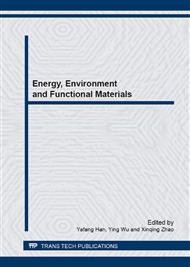p.102
p.106
p.111
p.117
p.123
p.128
p.135
p.144
p.152
Effects of Preparation of Cement Raw Meal with Carbide Slag on the Environment and Equipments
Abstract:
Based on the physical and chemical properties of carbide slag, the contents of heavy metals in effluent came from carbide slag drying process were studied, and then the composition of exhaust gas emitted from the carbide slag drying process and calcinations process of raw materials prepared with carbide slag was detected, in order to know whether there are harmful or corrosive gases released and the effect of the emissions on the environment and related equipments. The results indicate that the exhaust gases emitted from the calcination process of raw meal prepared with carbide slag is mainly composed of CO2 and water vapor, and is free from harmful gases. However, a lot of water in carbide slag during the pre-heat and decomposition process under high temperature would accelerate the corrosion of equipments. Simultaneously, a small number of heavy metal ions contained in the carbide slag can cause environmental pollution and sulfides would be adverse to the cement calcination process resulting in the crust blockage of kiln.
Info:
Periodical:
Pages:
123-127
Citation:
Online since:
April 2014
Authors:
Price:
Сopyright:
© 2014 Trans Tech Publications Ltd. All Rights Reserved
Share:
Citation:


